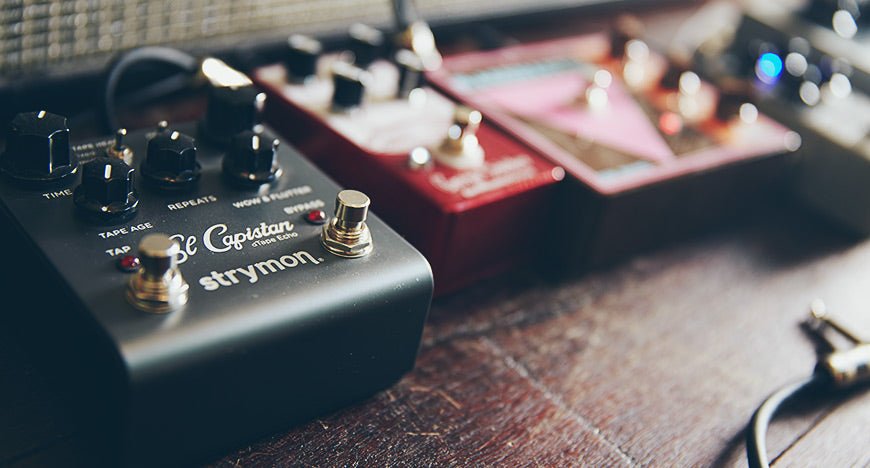Pedal Board - How to Order your Effects

Ordering effects is one of those things where you can be free to let your ears be the judge. However this is a common order that is a great place to start.
1. Dynamic Range – Compression
2. EQ – Wah Pedal, Equalizer
3. Drive – Overdrive, Distortion, Fuzz
4. Modulation – Phaser, Flanger, Chorus
5. Time-Based – Reverb, Delay
Here's why:
Each pedal imparts its own coloring to the audio signal. This order goes from least alteration of the signal to the most and minimizes the chance that the effects introduced at each point in the signal path cancel the previous ones out.
Dynamic Range If you have a compression pedal this should be first in your default signal chain order. Compression automatically “rides the gain” by pumping up volume when levels are low and cutting it when levels peak too high. The behavior of the rest of your effects chain becomes much more predictable by receiving this more uniform and consistent audio signal.
EQ If you have an EQ type effect it is most likely a Wah pedal, which creates its distinctive effect by sweeping a narrow frequency range up and down as you move the pedal. Placing the wah pedal next in this suggested default order enables it to benefit from the consistent audio signal coming from the compressor and it yields a more open vintage sound. In addition its output is more predictably colored by other effects down stream in the signal path such as gain and modulation.
Drive Drive pedals emulate the saturated gain sound of a tube amp turned up to 11 by clipping the audio signal. Since this effect adds lots of gain to your signal it works best in this next position as we’re still dealing with a clean signal from the compressor and wah pedal; thus you avoid boosting unwanted noise.
Modulation Modulation type pedals operate by splitting off a portion of the signal and applying slight delays and or altering the pitch of the incoming signal before mixing it back together with the unprocessed portion. This signal treatment increases the likelihood of cancellation effects if modulation is placed earlier in the signal path.
Time-Based Time-based effects are last in this suggested default order because they repeat the original signal without alteration. This treatment earlier in the signal path will conflict with other effects that alter the waveform if they were later in the signal chain giving you unpredictable results.
Now that we’ve laid out the “rules” we can move to the inevitable exceptions..
* If you have a Fuzz Face pedal you will need to plug your guitar into it directly. I learned this the hard way. It goes nuts if you have anything other than the guitar in front of it.
* Try the wah pedal just after drive pedals for a thicker sound.
* While modulation effects generally go after drive try placing phaser effects in front of your overdrive and distortion pedals.
Be sure to balance the volume across the signal chain (ensure the same volume when an effect is on or bypassed). Lastly, don't forget the most important effects; your guitar volume, pickup selector, and the type of guitar pick you use. Since these are the very beginning of the signal chain they have the largest impact on your tone.